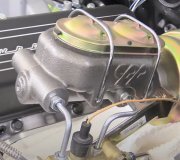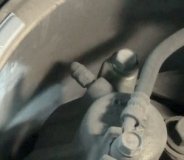Forget it. You can use the Rock Auto web site to look up both master cylinder part numbers to see if they're the same part, but even me, the cheapest person in the world, wouldn't stoop to installing a used master cylinder. Rebuilt ones are not expensive and you'll avoid a pile of potential problems.
First of all, crud and corrosion build up in the lower halves of the bores where the pistons don't normally travel. A real common mistake most do-it-yourselfers make is bleeding the system and having a helper push the brake pedal all the way to the floor when doing that. That makes the pistons in the master cylinder run over all that crud. It is real common to rip the lip seals which leads to internal leakage and a slowly sinking brake pedal. That may not show up for a few days.
The second problem only applies to GM front-wheel-drive vehicles. When there is an imbalance in the two hydraulic systems, a valve trips in the master cylinder that stops brake fluid from flowing to two wheels, one front one and the opposite rear one. That valve is commonly tripped by people bleeding the system with a helper, but it will not trip if the pedal isn't pushed more than halfway to the floor. A lot of master cylinders get replaced for this problem, even though there's an easy fix, then the new one has the same thing happen during the bleeding procedure. If you have to bleed the system, just let it gravity-bleed with the cap loose on the reservoir.
Be absolutely certain too to not get the slightest hint of petroleum product in the brake fluid. That includes engine oil, transmission fluid, power steering fluid, axle grease, and penetrating oil. If the brake fluid becomes contaminated this way, the repair is REAL expensive and will easily exceed the value of the car.
Thursday, April 2nd, 2015 AT 6:57 PM



